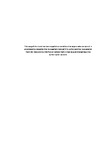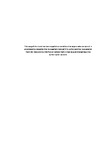The Sampling of Bodily Sound in Contemporary Composition: towards an embodied analysis
| dc.contributor.supervisor | Prior, David | |
| dc.contributor.author | Sewell, Stacey | |
| dc.contributor.other | Faculty of Arts, Humanities and Business | en_US |
| dc.date.accessioned | 2013-02-21T16:44:38Z | |
| dc.date.available | 2013-02-21T16:44:38Z | |
| dc.date.issued | 2013 | |
| dc.identifier | 822651 | en_US |
| dc.identifier.uri | http://hdl.handle.net/10026.1/1399 | |
| dc.description | Full version unavailable due to 3rd party copyright restrictions. | |
| dc.description.abstract |
The listener’s experience as an embodied subject is at the centre of this work. Embodied experience forms the basis for analyses of three contemporary compositions that sample bodily sound, in order to question how such works represent and mediate the body. The possible applications of this embodied methodology are illustrated through three case studies: Crackers by Christof Migone (2001), A Chance to Cut is a Chance to Cure by Matmos (2001) and Ground Techniques (2009) by Neil Luck. The findings of each analysis are placed within discussion of critical and theoretical concerns related to the (re)presentation, mediation and manipulation of the body both as materiality and as social construct, using, in particular, work by Hansen (2004) and Wegenstein (2006). The sampling practices of these works lead to the fragmentation of the represented bodies, in which margins between bodily interiors and exteriors are frequently crossed, bringing about a reconfiguration of the musical subject. Furthermore, the celebration of the bodily origins of these works complicates notions of recorded sound as disembodied. The analytical methodology developed in this thesis derives from a consideration of approaches in a number of fields: feminist musicology, music psychology, embodied cognition, phenomenology, music and gesture and new media theory. The sensations and affective responses of the listening body are discussed alongside an examination of how listening is shaped by processes of technological mediation. This thesis attends to both the body that is listening and the body that is listened to. I argue that it is not adequate to understand the works studied as merely representing the body, but suggest it would be more appropriate to understand the relationship between work and body as multi-faceted, conceptualising the body and recorded sound as mutually framing. This uncovers not only technology as mediation, but also the body as mediation. Finally, the case studies are used to reflect upon the limits of the embodied analysis methodology and its potential for wider application. | en_US |
| dc.description.sponsorship | This study was part-financed with the aid of a studentship from University College Falmouth and a grant from The Sir Richard Stapley Educational Trust. | en_US |
| dc.language.iso | en | en_US |
| dc.publisher | University of Plymouth | en_US |
| dc.subject | Musicology | en_US |
| dc.subject | Body | en_US |
| dc.subject | Listening | en_US |
| dc.subject | Embodied analysis | en_US |
| dc.subject | Electroacoustic music | en_US |
| dc.subject | New media theory | en_US |
| dc.subject | Senses | en_US |
| dc.subject | Technology | en_US |
| dc.subject | Mediation | en_US |
| dc.title | The Sampling of Bodily Sound in Contemporary Composition: towards an embodied analysis | en_US |
| dc.type | Thesis | |
| plymouth.version | Edited version | en_US |
| dc.identifier.doi | http://dx.doi.org/10.24382/4053 |
Files in this item
This item appears in the following Collection(s)
-
01 Research Theses Main Collection
Research Theses Main



